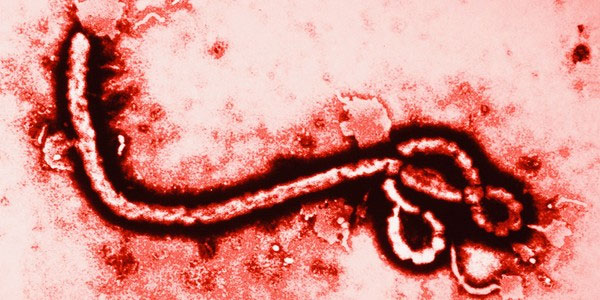Detect the first time of occurrence of Ebola virus in the world
Researchers say the Ebola virus has been around for more than 20 million years ago.
Recent research by American scientists has shown that the Ebola virus strain has appeared a long time ago. Accordingly, the Filovirus - a virus strain in the Ebola family appeared about 10,000 years ago, while the Marburg virus had at least 16 - 23 million years old.
Experts say the Filovirus is likely to have existed during the Miocene era and is demonstrated by its interaction with mammals for a long time - several million years.
Dr Derek Taylor of the University of Buffalo said: "This finding will give us the basis to learn about the evolutionary origin of Ebola, thereby helping to specifically confirm the terrifying pathogen in last time".

Moreover, through the bite of an infected animal, experts also discovered the historical origins as well as the evolution of the fossil gene virus.
The results showed that Ebola virus and Marburg virus had common ancestors and appeared from 16 to 23 million years ago.
The study of gene fossils called VP35 appeared in 4 different rodent species: 2 voles and two hamsters. Thereby, the researchers found that rodents have billions of "base AND" pairs in their genes.
Therefore, the proportion of a virus gene inserted into the same position in different species at different times is quite small. Therefore, it is possible that it has inserted into the ancestor gene of that rodent.
From here, Dr. Derek Taylor said, learning about the evolution as well as the interaction between Ebola and Filovirus, we have the opportunity to learn and analyze the effect between virus and organisms in tropical forests and insects. , mammals and humans.
The first Ebola outbreak was discovered in 1976 and scientists still know little about the historical information of this virus. The scarcity and similarity between the two Ebola virus strains, Marburg, is thought to be related to the death of the recent Ugandan medical staff.
Dr. Jeremy Bruenn - co-author of the study said that better understanding of Filovirus will provide insight into the ancestors of the Ebola virus, thereby finding ways to prevent their pathogens.
The study is published in PeerJ Magazine.
- Ebola virus continues to rise
- Warning for more dangerous Ebola virus changes
- Detecting Ebola virus in spermatozoa who got sick 9 months earlier
- Ebola virus: Why has no cure?
- The signs and symptoms of Ebola virus disease
- Ebola virus detection in 30 minutes
- The person with Ebola has never recovered, the Ebola virus has fooled us all
- New hope in the fight against Ebola virus
- How to prevent the spread of Ebola virus infection
- The source of spreading Ebola virus in Liberia
- The world faces the risk of Ebola epidemic spreading
- Virus infected 10 people, dead 9 easy to spread on air?
 Green tea cleans teeth better than mouthwash?
Green tea cleans teeth better than mouthwash? Death kiss: This is why you should not let anyone kiss your baby's lips
Death kiss: This is why you should not let anyone kiss your baby's lips What is salmonellosis?
What is salmonellosis? Caution should be exercised when using aloe vera through eating and drinking
Caution should be exercised when using aloe vera through eating and drinking